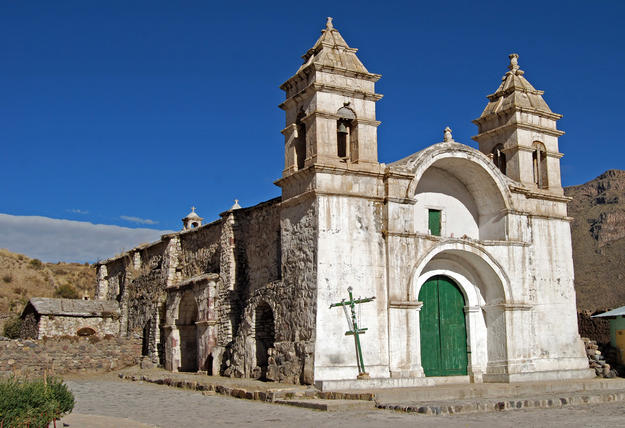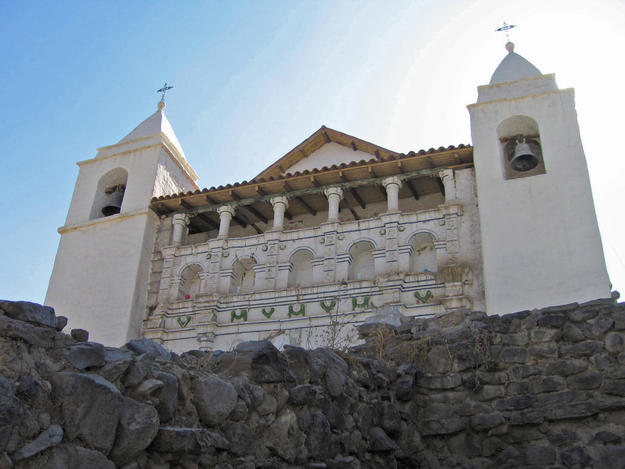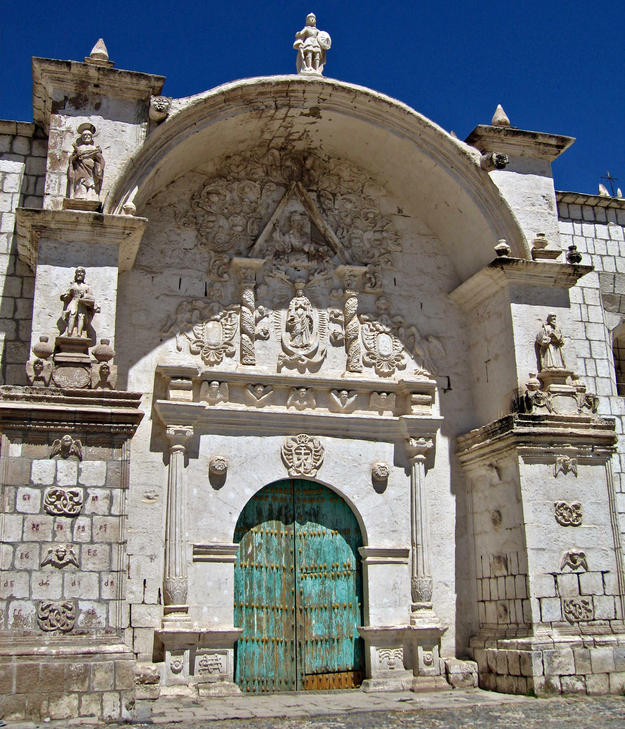Historic Towns of the Colca Valley
Background
The churches of the Colca Valley were built in the seventeenth century and have not been modified much since. Constructed of local materials such as sillar (a light-colored volcanic stone), mud mortars, and lime stuccoes, the buildings incorporated both indigenous and colonial styles in what became known as “Andean baroque,” and were decorated with mural paintings and carved polychrome wood. More than 15 of these churches anchor small towns along the sides of Colca Canyon. Some of the towns have survived the centuries through subsistence agriculture, yet the overall poverty and isolation of the region prevented adequate maintenance of the churches. An earthquake in 2001 worsened the situation. A recent wave of eco-tourists interested in the highland landscape and condor watching has brought many visitors to the valley, and this is starting to bring alternative economic resources to the region. The churches, if restored, have tremendous potential as another tourist attraction.
How We Helped
WMF collaborated with the Spanish Agency for International Development Cooperation (AECID), along with the Autoridad del Colca AUTOCOLCA, the Municipality of Caylloma, and the National Institute of Culture INC (now Ministry of Culture), to help train local workers in traditional building crafts so they can restore their churches and maintain them in the future. WMF supported the restoration of the church of Jesús Nazareno in the town of Canocota, between 2009-2010, and the church of San Juan Bautista in Sibayo, between 2010-2012. The churches, which are important examples of the Andean baroque, were restored by masons and artisans from the local and surrounding communities. The work included the restoration of the building’s stone structure, lime stuccoes, and decorative interiors and cult artifacts, as well as the installation of small site museums.In the summer of 2009, three graduate students from the historic preservation program of the University of Pennsylvania were sponsored by WMF to visit the Colca Valley churches and contribute to the preservation efforts of the AECID in the region.
Why It Matters
These remote but highly significant churches have tremendous potential as tourist attractions, but many communities do not have the resources to maintain them. The development of a tourist circuit in the Colca Valley will help bring in needed resources to an impoverished region and allow for the regular maintenance of the churches while maintaining their religious use and importance in their communities. Fostering the participation of local communities in the restoration work by training them in traditional building crafts will contribute to job development, a renewed sense of ownership, and improved overall living conditions. In addition, these interventions will provide a starting point for other projects and training initiatives in the region.



